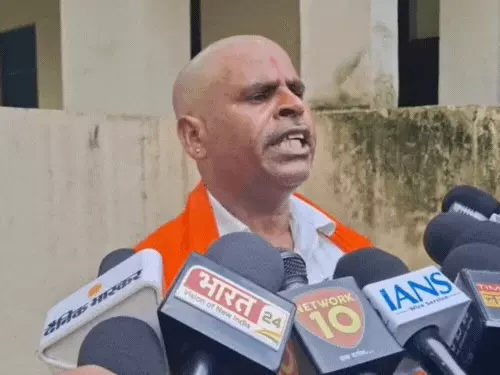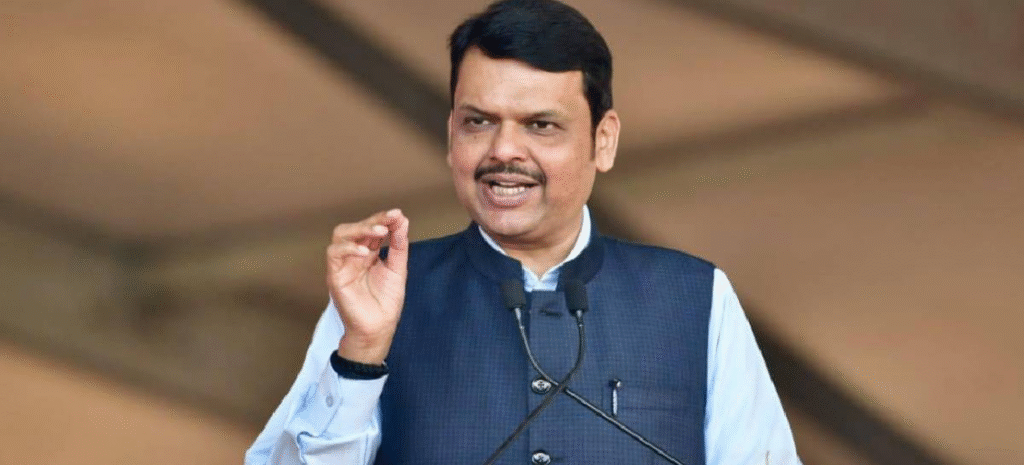How the Public Shaming of Mukut Mani Yadav Revealed the Dangerous Fusion of Caste Supremacy, Spiritual Commercialization, and Social Media Manipulation
In a country where the sacred is deeply intertwined with the everyday, any corruption of religious discourse is bound to shake public sentiment. But what happens when kathas—once the symbol of peace, devotion, and self-reflection—turn into high-voltage spectacles driven by TRPs and caste politics? The recent scandal surrounding kathavachak Mukut Mani Yadav (aka Mukut Agnihotri) in Etawah, Uttar Pradesh, throws this disturbing question into sharp focus.
Arrested after being publicly humiliated and later accused of fraud, the kathavachak controversy has exposed the darker currents flowing beneath India’s exploding spiritual influencer economy. With viral videos, caste allegations, and political firestorms surrounding the case, the story is not just about one man—it’s about an industry that’s rapidly losing its soul.
The Etawah Incident: When Caste Overpowered Katha
In June 2024, Mukut Mani Yadav was invited to narrate a Bhagwat Katha in Dadarpur village under Bakewar police station, Etawah. The event was arranged by local residents including one Pappu Baba, who later turned out to be a key perpetrator in the assault.
According to Mukut, things escalated during a dinner conversation when he was asked about his caste. Upon revealing he was a Yadav, he was accused of “deceiving” a Brahmin village by narrating sacred scriptures without belonging to an “acceptable” caste. Soon after, around 50 people, including Atul, Dealer, and Manish, physically assaulted him. His head was shaved in public, his harmonium was broken, and he was forced to rub his nose on the ground and touch the feet of the female host of the event—an act of utter public humiliation.
इटावा में दबंगों ने एक कथावाचक की चोटी काटी, सिर मुंडा दिया। महिला यजमान के पैर छुआए और नाक रगड़वाई। कथावाचक के साथी से भी मारपीट उसका सिर मुंडवाया, हारमोनियम भी तोड़ दिया। मामला बकेवर थाना क्षेत्र के दादरपुर गांव का है। कथावाचक ने कहा कि यादव होने की वजह से उसके साथ मारपीट की गई… pic.twitter.com/xfwkxBcYun
— Rajesh Sahu (@askrajeshsahu) June 23, 2025
The attackers filmed the entire incident, weaponizing humiliation in front of a crowd that included women and children. His associate was also similarly assaulted. But the issue didn’t end there. Zee News later revealed that the kathavachak had allegedly concealed his identity—his Aadhaar card listed him as “Mukut Agnihotri.” This led to an FIR being filed against him for “hurting religious sentiments” and “identity fraud”—an ironic twist for someone who had just been brutalized.
The state government responded quickly. While Akhilesh Yadav condemned the caste violence and extended support to Mukut, CM Yogi Adityanath warned of stricter measures against “any attempt to create caste-based tension.” The politics of identity had once again overtaken the purpose of faith.
Caste or Cover-Up? The Truth Behind Mukut Agnihotri’s Name Change
The controversy ignited questions about casteism, but it also raised uncomfortable truths about transparency and double standards. Critics asked: if Sarita Yadav, Neelam Yadav, Manorama Singh Yadav, and Mangesh Yadav—all practicing kathavachaks—can preach openly, why did Mukut conceal his name?
कथावाचक गोल्डी यादव👇
— Dr. Neha Das (@neha_laldas) June 23, 2025
कथावाचक ममता शाक्य👇
कथावाचक रंगोली पटेल👇
हर जाति के कथावाचक होते हैं!
ये मामला कुछ और लग रहा है, नाकि जैसा दर्शाया जा रहा है!! pic.twitter.com/NFLIphKzX7
Supporters argue that Mukut likely adopted the name “Agnihotri” out of fear of caste discrimination, not fraud. His assistant, Sant Singh Yadav, backed this claim publicly. But detractors, including members of the Brahmin community, accused him of “infiltrating” a sacred space under false identity. The situation thus blurred the lines between casteism and accountability.
This isn’t just about one Yadav kathavachak. The incident reflects a larger crisis: the unchecked rise of spiritual influencers who often rebrand themselves to fit market demand. In an era where brand value often overshadows scriptural depth, even a surname can become a marketing strategy.
Faith or Fame? When Religious Storytelling Becomes a PR Industry
In recent years, India has seen a new class of religious preachers—social media-savvy, camera-friendly, brand-conscious kathavachaks who blend bhajan with Bollywood and pravachan with punchlines. Multi-crore stage events, drone shots, and imported SUVs have replaced the humble ashram setup. What once started as devotional storytelling is now often content farming for views, shares, and donations.
Unlike traditional Gurus who stayed away from the limelight and emphasized inner awakening, today’s digital dharmic stars seem to care more about subscriber counts than shlokas. Many bypass formal scriptural training altogether and focus instead on charisma and relatability. While some do succeed in spreading awareness about Sanatan Dharma, others exploit it for monetary gain, political positioning, or worse—caste-based manipulation.
The Kathavachak Kaand is a byproduct of this transition—from spiritual responsibility to performative religiosity. It reveals how easily dharma can be distorted when it becomes entertainment instead of enlightenment.
The public shaving of Mukut Mani Yadav was more than an assault—it was an indictment of our collective failure to uphold the dignity of both Dharma and humanity. Yes, questions must be asked of those who conceal their identities for personal gain. But even more urgent is the need to dismantle the caste barriers that still decide who is worthy of narrating divine tales.
If Sanatan Dharma is truly universal, its messengers must be judged by knowledge, not by caste. If we don’t reclaim our spiritual institutions from the grip of identity politics and social media manipulation, we risk turning sacred katha into nothing more than viral drama. And in that spectacle, the soul of Dharma may be the greatest casualty.





















